DMX was one of the very few ‘mainstream’ rap or hip-hop artists I still listened to.
I put the word ‘mainstream’ in quote marks, because I don’t think he was still considered mainstream. He was certainly a massive rap star back in the day; but the intervening years saw a decline in commercial success and mainstream prevalence, even though DMX (Earl Simmons) remained a massive figure in the rap culture.
Some conspiracy theories have done the rounds since his sad death was announced: including one suggesting that he died, not from a drug overdose, but after taking a COVID vaccine. I don’t have any comment on that; I haven’t seen any reliable evidence or testimony to support this claim.
I will say, however, that it’s odd that a drug overdose is being generally cited as having caused the heart attack that led to his coma and death, yet the drug in question has still not been specified: especially given that he was on life support for something like a week, which is plenty of time for it to have been specified what it was he’d apparently OD’d on.
Also, most of the reports say ‘suspected’ overdose only: the OD actually isn’t confirmed.
Whatever it was that killed him, it not only caused a heart attack, but shut down his lungs and liver functions and put him in a coma. It should be specified – for public education purposes, if nothing else – what the lethal substance was that DMX apparently took. But this information may be disclosed in the coming days, so let’s move on from that.
I don’t entirely blame people who reflexively reach for conspiracy theories. I’ve been forced to re-evaluate my own views on, for example, Chris Cornell’s death and whether or not he took his own life (I still don’t know what I think about that anymore: and it upsets me too much to think about, which is why I’ve admittedly been avoiding it). Like rock, rap and hip-hop has quite a history of suspicious or questionable deaths: two that I still think about a lot were the tragic deaths of a very young Aaliyah (with whom DMX was friends) in 2001 and the very strange and eerie circumstances surrounding the death of TLC’s Lisa ‘Left-Eye’ Lopes a year later.
As for someone like DMX, you’re talking about someone who was openly in conflict with the music industry and with the perceived gatekeepers of rap and hip-hop: when you’re talking about someone who openly spoke about those things, said that people were trying to destroy him, and who clearly felt he was being done dirty, it’s actually quite natural to have suspicions about his death.
That said, it has always been known that he had a long history with drugs: so that he might’ve lost his life that way isn’t necessarily shocking.
But the fact that he did have such a long history with drugs is actually very significant to what I want us to explore in this article: specifically an alleged conspiracy that lies at the very heart not just of rap, but arguably of modern youth culture.
I, and many others, have considered for some years that there might be nothing coincidental or accidental about the fact that rap became the predominant musical genre in the late 1990s and the 21st century. And, moreover, that rap and hip-hop itself seemed to undergo a marked change at around that time: from a genre that was once very socio-political and relevant (and sometimes even fun) to one that – in its most pushed, popularised and glamorised form – was all about money, status, the sexual objectification of women, or violence, and, at the most extreme end, gangsta culture and internal warfare.
When rap displaced rock as the predominant musical genre among young males, it also seemed to go in a different cultural direction. Most mainstream/popular rap or hip-pop from this point on became either mired in the Gangsta Rap culture or became the predominant arena for that curious brand of occult symbolism and so-called ‘Illuminati’-related imagery and messaging that now dominates so much of the scene – and which even rappers themselves complain about.
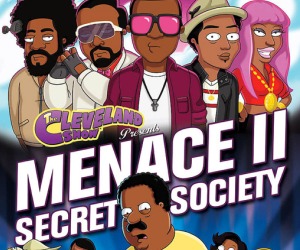
That perception is so widespread that it even formed the basis of an episode of The Cleveland Show.
This ascension of rap and hip-hop from grassroots, street-level culture and honest expression to billion-dollar corporate enterprise seemed to happen very abruptly: and with it, coincidentally or otherwise, all of the bullshit we associate with the genres today: again, at least at the mainstream level of controlled mass popularity and influence.
And it’s not just conspiracy theory coming from people like me: just consult people like Public Enemy’s Professor Griff, as an obvious example. He’s been talking about this shit for years: and eventually wrote the book The Psychological Covert War on Hip Hop to really get the point across.
And Public Enemy, of course, was a prime example of how early rap and hip-hop trailblazers were being frozen out of the new, controlled cultural paradigm (to the extent that one of the pioneers of rap had to resort to asking fans to fund their album).
The corporate music industry in general, and hip-hop in particular, has its gatekeepers deciding who and what is allowed to come through into mass-market propagation. And the likes of Public Enemy were among those essentially written off of the guest-list by the new culture controllers.
Someone like DMX, though he was a major star right in the midst of this changing of the guard (though he was rapping long before that time), can also be seen as someone who, eventually, was written off of the guest-list too, despite his massive sales and status. If you watch DMX interviews, you can hear him essentially alluding to this himself: here was a performer who quite clearly felt bitter and resentful towards the industry and towards rap and hip-hop’s gatekeepers.
Essentially, when he stopped playing the game – when he started moving his lyrical focus and content in a different direction – he was sidelined.
The central item of conspiracy here is the idea that hip-hop and rap were either co-opted or redirected at a key point: and it’s something that warrants serious consideration.
This idea was compounded significantly in 2012, when an anonymous letter began circulating, which claimed that the rise of gangsta rap in particular was in large part a cynical plan organised by major record labels in conjunction with the prison industrial complex.
Originating at the rap blog, Hip Hop Is Dead, the anonymous letter, claimed to have been sent by an insider, spread across various websites and forums. The author of the letter claimed that he was part of a meeting in early 1991 involving music industry moguls and various other figures, to discuss the future direction of the rap music genre.
Referring to it as “one of the biggest turning points in popular music, and ultimately American society”, he claimed to be disclosing an alliance between the rap industry and the prison industrial complex. Some of these companies involved in the music business, he said, had invested heavily into privately owned prisons; and the thinking turned towards using music industry influence for the profit of the prison system.

‘We were told that these prisons were built by privately owned companies who received funding from the government based on the number of inmates,’ he wrote. ‘The more inmates, the more money the government would pay these prisons. It was also made clear to us that since these prisons are privately owned, as they become publicly traded, we’d be able to buy shares…’
It continues, ‘…since our employers had become silent investors in this prison business, it was now in their interest to make sure that these prisons remained filled. Our job would be to help make this happen by marketing music which promotes criminal behavior, rap being the music of choice...’
As he noted, ‘Rap acts that talked about politics or harmless fun were quickly fading away as gangster rap started dominating the airwaves. Only a few months had passed since the meeting but I suspect that the ideas presented that day had been successfully implemented. It was as if the order has been given to all major label executives.‘
True or false, it’s an eye-opening allegation.
The anonymous author also spoke of his guilt about what was allegedly playing out. ‘As rap got worse, my guilt grew… I see how the criminalization of rap music played a big part in promoting racial stereotypes and misguided so many impressionable young minds into adopting these glorified criminal behaviors which often lead to incarceration.’
Now, obviously, this letter could be a hoax or a fiction. And it being anonymous doesn’t help. However, it could also be seen potentially to match the reality of the situation fairly well.
This piece, for example, does a respectably forensic job of trying to debunk the anonymous letter’s claims. And he may be right in his analysis: however, I would say that the author’s strict focus on the timeline of ‘gangsta rap’ in terms of sales figures and mainstream charts is focused too literally on the anonymous letter’s citing of 1991 as the key turning point.
Conspiracies don’t take effect immediately; or bear real fruit within just a short or immediate time frame. They take place – and take effect – over time. And certainly something like the anonymous letter’s claims would take place over several years and not necessarily show measurable results in just two or three years. People and interests like that play a long game.
So, in theory, the ‘plan’ being discussed in 1991 and only really bearing fruit in the mid to late 90s makes sense to me.
Something else to bear in mind here is that this approximate time-frame – from the late 80s to the mid-to-late 90s, with 1991 in particular a big turning point – also represented a major musical or cultural landmark coming and going: specifically, it was arguably the last gasp of rock music as a major or meaningful force.
The alternative music scene – triggered largely by what was going with the Pacific North-West scene, involving bands like Nirvana and Soundgarden – was essentially the last major landmark period in popular music other than what to come with rap and hip-hop.
In fact, that brief era and those acts were – at the beginning – a grassroots musical and counter-culture reaction to the horrible, glam-laden and decadent rock groups of the 1980s: rock music in the 80s was, in some ways, what mainstream rap music would be turned into in the late 90s and the 2000s – self-obsessed, overly macho, demeaning to women, wealth and status obsessed, and overly dominant in terms of radio play and MTV, etc.
When the grunge and alternative thing happened, primarily in 1991, it was – in industry terms – an unplanned and unforeseen event: Geffen barely even promoted Nirvana’s Nevermind album, because they had no expectations for it. It was only when Nevermind suddenly displaced Michael Jackson’s Dangerous at the top of the charts that the record companies started scrambling to try to capitalise on the alternative scene.
In the following few years, the industry – including the likes of MTV and the radio stations, etc – tried its best to manage this musical and cultural shift, trying to make it as profitable as possible: but it wasn’t necessarily easy when the main icons or figureheads of the scene were themselves openly ambivalent towards fame and success and, in some cases, openly hostile or mistrustful towards the industry itself.
That period came to an end roughly around the mid-90s (admittedly, it gets debatable when it comes to fixing specific dates on these things), and especially after the violent death of Kurt Cobain in 1994.
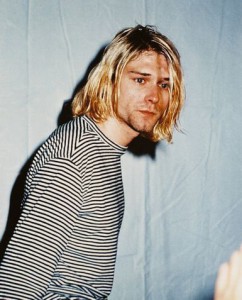
It was around this time, or very soon after, that the industry shifted its focus entirely. Rock was dead: and rap and hip-hop were very quickly becoming the predominant musical genre at the forefront of cultural consciousness.
At some point in the mid-to-late 90s, for example, MTV simply stopped showing all the alternative and rock videos it had had in rotation for the previous years and switched almost entirely and exclusively to rap and hip-hop (as well as standard pop): almost as if a memo had come down from on high to inform them of the shift.
Not too long after, it also became apparent that *not all rap and hip-hop* was being promoted and propagated on these platforms: only certain types of artists and content were being pushed out to the young audience.
Just as the industry had tried to harness and stage-manage the alternative music explosion, it naturally would’ve needed to control the emerging rap and hip-hop scenes too. Both rap and hip-hop were also grassroots genres and movements; something that came out of the culture at a street level.
And they were originally somewhat counter-cultural or anti-establishment to a large extent. Much of it – like Public Enemy, as a prime example – was also highly political and intelligent.
If the idea was to use the emerging rap scene – or to co-opt it – and redirect it into acting as a negative influence, particularly among young black men, with the aim being to create and glamorise a culture of crime, gangs and drugs so as to maximise the prison populations, you could certainly look at the history and come to the conclusion that it’s a plan that played out pretty well.
As this HuffPo piece reports, ‘In 1980, there were roughly 40,000 drug offenders in U.S. prisons, according to research from The Sentencing Project, a prison sentencing reform group. By 2011, the number of drug offenders serving prison sentences ballooned to more than 500,000 — most of whom are not high-level operators and are without prior criminal records…‘
The drugs trade and the gang situation obviously also go hand-in-hand: part of the same vicious cycle.
And before we come back to the music element, let’s factor something else in.
And let’s remember that, in 1996, journalist Gary Webb rocked society with his claims that the CIA had been involved in the flow of crack into the black community. The crack epidemic in Los Angeles, the investigative journalist claimed, was in fact created by the US alliance with the right-wing Contra Rebels in Nicaragua, aimed at destabilising the Socialist Nicaraguan government.
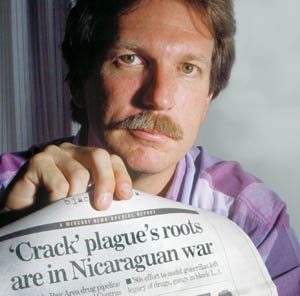
Webb reported that, for the best part of a decade, a drug ring was selling tons of cocaine to the Crips and Bloods street gangs in Los Angeles; with the millions in profit being sent to the Nicaraguan proxy army being run by the CIA. This network, he claimed, established the first pipeline between Columbian drug cartels and the black neighbourhoods in Los Angeles.
The result, he explained, was the massive presence of crack in those urban communities: and it also created the conditions – both in terms of money and in terms of connections – for the gangs to become heavily armed.
The implication – not by Webb himself necessarily, but by anyone who reads between the lines – is that this operation helped create both the crack epidemic and the significant expansion of gang warfare and the ‘gangsta’ culture.
It didn’t invent the gang culture, by any means: but it can certainly be said to have amplified and facilitated it.
Said Webb, “Thousands of young black men are serving long prison sentences for selling cocaine — a drug that was virtually unobtainable in black neighborhoods before members of the CIA’s army started bringing it into South-Central in the 1980s at bargain-basement prices.”
Of course, most of the mainstream media – including the likes of the New York Times, Washington Post and Los Angeles Times – pooh-poohed Webb’s claims and actively tried to discredit him. And he was essentially expelled from professional journalism: to add insult, even some of his obituaries when he died referred to his investigations as ‘discredited’. Webb apparently shot himself in the head in 2004 (twice – that’s some feat).
It also seems to be fairly well established that the long ‘War on Drugs’ (initiated by Nixon) was less to do with stopping drug use and more to do using it as a premise for going after black people, as well leftists and hippies: it is widely argued that the so-called war on drugs was designed to never be won, but was used to facilitate massive increases in the number of people going to jail and feeding the prison system – which is, measurably, what happened in those decades.
In that context, and assuming Webb’s findings and conclusions were true (and there’s been subsequent corroborating testimony over the years), the fact that the CIA would then have enabled or encourage the inflow of crack into urban communities would just demonstrate the self-perpetuating vicious cycle. And then it wouldn’t be difficult to think that maybe something like the anonymous letter about gangsta rap might be legit.
Even if the specific letter isn’t legit and the meeting it describes never really happened – it doesn’t take too much imagination to think a meeting or programme very much like it might’ve nonetheless happened at some point.
Because it does fit the timeline: and the course of events. Something happened in rap – something shifted – right before it became apparently the biggest selling music genre.
And, what’s more, if you look at these two ideas discussed here, you could actually see them being entirely inter-related.
The anonymous letter claims, for example, that corporate music industry figures were in alliance with the prison system: the aim being to use a specific music genre – attached to a specific culture – to help glamorise and perpetuate a criminal lifestyle, thus creating a sub-culture that would result in an unending stream of young men getting caught up in street crime, gang activities and drugs, and therefore ending up in prison: thus feeding the prison industrial complex.
The rise of ‘gangsta rap’, he claims, was driven in part by this operation.
And then you have what Gary Webb claimed to have uncovered: the CIA operations facilitating the flow of crack (‘a drug that was virtually unattainable in black neighbourhoods’) into the urban communities in Los Angeles, and thus empowering, escalating or even arguably creating the gang warfare and gangsta culture that was then being glorified by gangsta rap music.
If you squint in the right light, those two ideas or agendas are entirely complimentary. One used music and culture to glamorise and glorify the gangsta culture and mindset, the other actively exacerbated that culture and activity in actual material terms on the ground.
Those two programmes – assuming either of them really happened – are symbiotic: each informs, influences and sustains the other.
And of course the influence and effects didn’t stay limited to America, but spread all over the place. Even in inner-city schools in somewhere like London, such as the one I went to, pretty much all the male youth were heavily into gang culture and gangsta rap – and this was in the 90s, before things even really got going. It’s a thousand times worse now.

And the culture itself goes down the toilet, lost in a vicious cycle, while – concordantly – the prison system eats it all up.
Again, the letter about the alleged meeting doesn’t exist in a vacuum: the idea it puts across is something that was already in the minds of many, including many of those who were part of the rap or hip-hop scenes. And, again, Professor Griff is a prime example of someone who talks about this kind of stuff: but if he’s not your cup of tea, even someone as mainstream as the highly talented Alicia Keys has been on record saying she believes gangster rap was invented by the government to “convince black people to kill each other“.
Even the two most celebrated or lionised rappers to this day – Tupac Shakur and Notorious B.I.G, neither of whom I’m particularly a fan of – were both (according to the official narrative of their deaths) victims and/or perpetuators of the gangsta rap paradigm, both of them dying by that sword.
The gang lifestyle – and its inherent violence – literally became inseparable from the music scene. And even those kinds of murders only served to further glamorise the scene: both Tupac and Notorious B.I.G became virtually deified after their deaths and remain cultural icons of the scene.

Though, curiously, in Tupac’s case, there’s been a lot to suggest that he wasn’t into the gang culture at all and was simply stuck playing a role that he couldn’t get out of.
What does any of this have to do with DMX?
Well, just that DMX seems, in some key ways, to have been a victim – or even a product – of all of this too. While it’s debatable whether DMX could’ve been classed as a ‘gangsta rapper’ (though he certainly has been labelled in that category), there’s no question that he was entangled his whole life with both drugs and with the prison system.
He went to jail as many as 30 times for various offenses: the latest being as recently as 2018.
And he has also had issues with drug use his whole life. One of the more striking things I recall DMX saying in an interview was that his first experience of crack was entirely by accident: according to him, the first time he smoked crack, he’d thought he was only smoking marijuana – but his spliff had been spiked. ‘He passed the blunt around and … I hit the blunt. I never felt like this before. I later found out that he laced the blunt with crack… why would you do that to a child?‘
In later years, he actually seemed to be reevaluating his position, his influence and his purpose. Despite being one of the most successful and influential rappers of all time, he seemed to have been – or at least felt he was – abandoned by the rap and hip-hop gatekeepers; and even accused them of actively trying to destroy him.
And we’ve seen before that even the highest-selling recording artists, once they’ve fallen out with either the industry controllers or the cultural gatekeepers, can end up in a lot of trouble: not just financial troubles, but even jail and, in some cases, death. Michael Jackson is the most famous example, but there have been others.
It’s also entirely possible or even likely that DMX was simply on a downward spiral of his own making. But the point is that he seemed to be seriously rethinking his place in things and calling out hypocrisy and corruption in his arena: and if you look at some of what he was saying in interviews, he seemed to be unhappy about the direction – in terms of culture and influence – that the genre had gone in.
The real question, as far as this article goes, is whether that direction – and its social results – were deliberately planned out: or whether they simply emerged entirely organically and unaided from within cultural or socio-economic conditions that fermented them.
I would also love to have known what someone like DMX thought about the matter too. Either way, he was one of the greats of rap.
The ‘P. DIDDY’ Enigma: And a Massive Conspiracy Rabbit Hole…

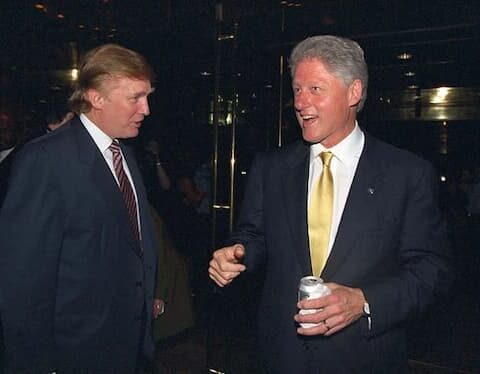
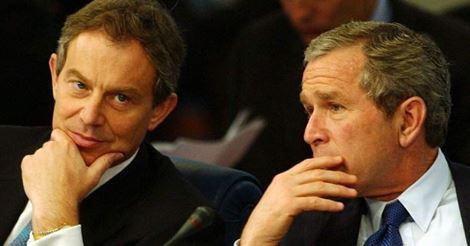
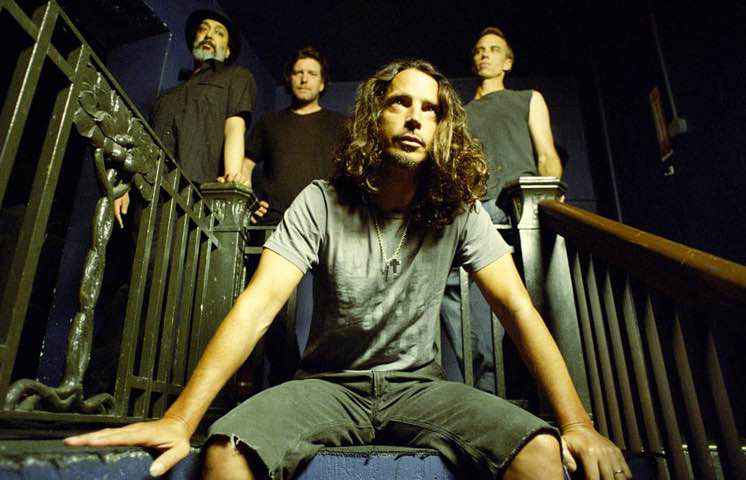

The real-life examples were my favorite part. I completely agree with your points. The way you explained the topic was very clear.
Your blog post had me hooked from the very beginning!
One more thing: I posit that the entities with a vested interest in controlling the American public have corrupted the training of public school teachers for DECADES.
Once upon a time, U.S. public schools taught SYSTEMATIC PHONICS, grammar, memorization of multiplication times table, cursive handwriting, and even sentence diagramming.
What was the result? An educated populace that successfully advocated for better working conditions and wages. That posed a threat to the egregious profits of those in power. Therefore, they fomented an attack on effective teaching methods to keep poor people ignorant — and likewise replaced inspiring rap artists with gangsta rap to keep the poor imprisoned in their circumstances.
Hi M, thank you for contributing such detailed and thoughtful comments. Sorry it took me a few days to get to them.
That’s all really interesting, especially given your well-placed perspective. And I pretty much agree with your points. It’s also why it’s so easy to manipulate the necessary percentages of the voters and into constantly voting against their own best interests. I mean, Trump literally gesturing at his big crowd and literally saying “I love the uneducated!” was probably the most blatant thing a politician has ever said to his supporters.
In Britain it has become almost as bad in the last eight or nine years: but not as bad as in the US, as the US has been playing that game a lot longer.
It’s still fascinating to me that American school kids have to take the pledge of allegiance every morning. I think I read somewhere that North Korea is the only other country that does something similar!
Thank you for this excellent analysis! I found your blog by using DuckDuckGo (Google has basically censored blogs from its search results). You make a powerfully persuasive argument that the corporate takeover of rap serves to feed the pipeline to prison.
I’m a teacher, and what I discovered is the following: Future Prisons are planned and built based on the 3rd grade reading scores of African American boys. Look it up.
Teacher colleges train elementary school teachers to teach children how to read using the “Whole Language Approach.”
What is that? Basically kids have to guess what a word is by the surrounding context, pictures, etc. Students also have to memorize sight words.
The Dolch list contains 220 sight words. However, if those kids learned how to read using SYSTEMATIC PHONICS, then they would only have to memorize 22 SIGHT WORDS because the rest of the words on the Dolch list follow phonics rules.
So the Whole Language Approach promotes memorization of sight words, guessing what a word by what it looks like, context and pictures. If you were to ask this student to “sound out a word,” he/she would have no idea how to do that.
Results: Students can read basic words in 1st and 2nd grade, but then their reading comprehension scores plummet in 3rd grade because they encounter more complicated text that doesn’t lend itself to guessing.
So many public school students end up as functional illiterates. Parents who have the means hire tutors to provide remedial literacy lessons so their children could learn how to read. Poorer parents, though, are out of luck.
That’s why African American and Hispanic students who attend Catholic school and other private schools outperform their public school counterparts by huge margins. Catholic schools have been teaching SYSTEMATIC PHONICS for more than 100 years.
Plus, Catholic schools teach memorization of the multiplication table and cursive handwriting, both things that college professors tell elementary school teachers in training NOT to do. Rote memorization is an anathema to graduate school professors of education.
If you don’t believe me, ask any American teenager what 8 x 7 is — Most will need to use their cell phone to get the answers. Not so with students from other countries.
So the majority of American public school students don’t know how to read, write, or do math well. But the private school elite in the U.S. do. Therefore, you end up with a two-tiered society, largely along socioeconomic and racial lines. Does that bode well for the functioning of our democracy???
This is a good read, thank you BB. I learned a few things. Interestingly enough, Miles Mathis has done papers on
Kurt Cobain http://mileswmathis.com/cobain.pdf
Tupac Shakur http://mileswmathis.com/2pac.pdf
and a section on Michael Jackson in the body of a John Lennon paper http://mileswmathis.com/lennon.pdf
To glance at the titles will make many people roll their eyes and dismiss the whole thing, but that would be their loss. I will not bother with disclaimers about context in these papers, just that one must read the papers in their entirety, follow the links, and take in *all* the evidence available, and judge for themself, as it should be. There is no shortcut to the larger understanding. The added context is provided in the numerous other papers linked within these documents.
Where Dave McGowan left off, Mathis picks up, and does a better job, with eyes open. There are glaring possibilities left untouched by people like McGowan.
I believe it is correct to understand “popular” music is a means to an end, for corporate profits and control of the public. That’s been true for a century. The deeper you look, the more connections to military intelligence and the wealthy elite will turn up.
The letter referred to above seems to invite comparison to another well known document, purported to be a “forgery.” http://mileswmathis.com/protocols.pdf
Thanks man, I’ll check these documents out. I’m aware of the general ideas about the music industry and the elite/military/psychological connections in key places, etc, regarding some of the 60s counter culture, for example. And also things like the Tavistock Institute and the Beatles, etc. There’s definitely a lot there to consider, most of all with mainstream pop music. I’m not as-yet aware of anything relating to Cobain – who actually is a personal hero of mine. But I’ve also somewhat learnt to separate the art itself from any possible connections or entanglements of a more controversial kind: which allows me, for example, to continue enjoying Jim Morrisson and the Doors without thinking too much about the possible shady elements in the background. But I will definitely look at these links – thank you.
*MF Doom (not Dr. Doom.)
Such a great fucking read tBB. So much there that for sure I’ll find myself re-reading at another point in time as you covered so much.
DMX’s death was unexpected and untimely, for me. Also, this blow was felt all the more harder having just starting to come to terms with news of the loss of Dr. Doom, who had his own unique place in Rap/Hip-hop history as a talented lyricist.
However, DMX through his music and career, always came across as personable – never aloof, even with his catalogue of success. For me there were always those one or two songs, freestyles and of course (as you’ve mentioned) the raw truth, no frills, no airs interviews that made DMX larger than life. He was a man who was always fighting his personal demons along with other struggles which were more commonly shared among people, in particular, black men. But through is music, he expressed himself and more importantly, I feel, he shared his tools for coping. Though I identify as an atheist, I can recall on more than one occasion a spiritual feeling and purpose for good listening to one of DMX’s prayers – be it via his discography or interviews.
Months before DMX’s passing, I re-discovered one of his lesser known tracks among my tapes. Listening again, there’s these lyrics, of which its basic direct truth, has me returning to it, often.
Rest in peace, X.
Thanks Mumra. Hard hitting lyrics. And yeah, he definitely carried himself differently; no BS, just an open wound.